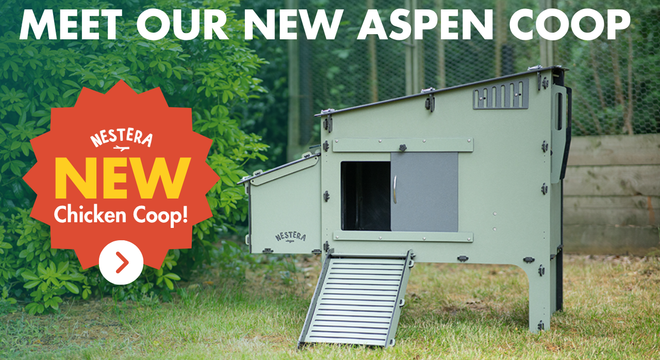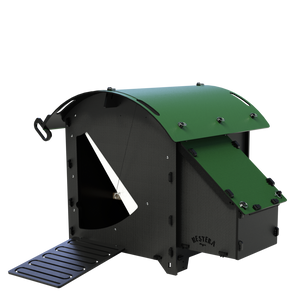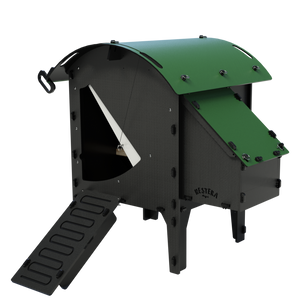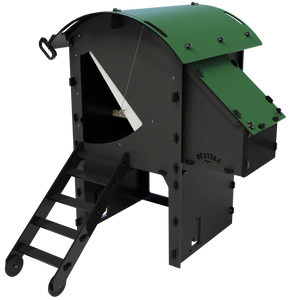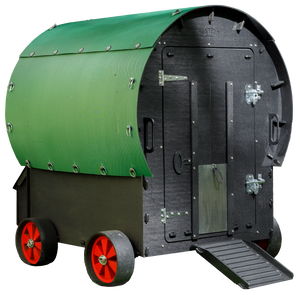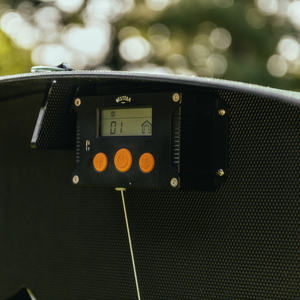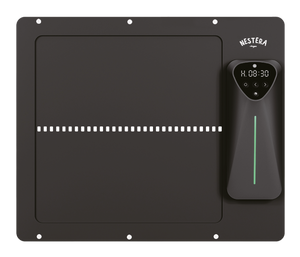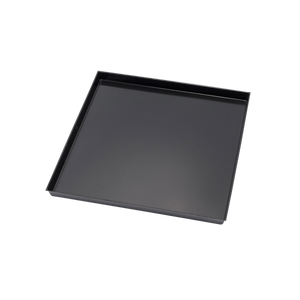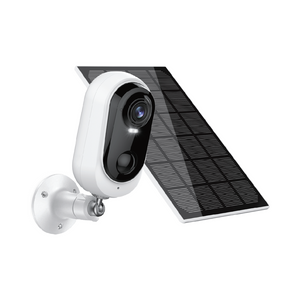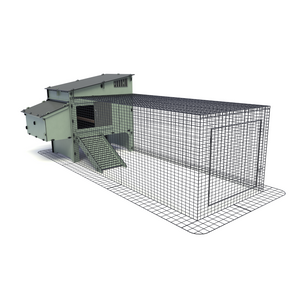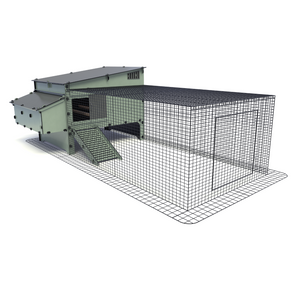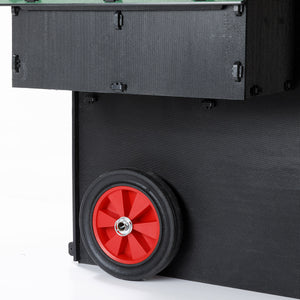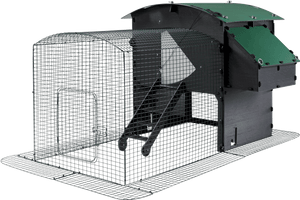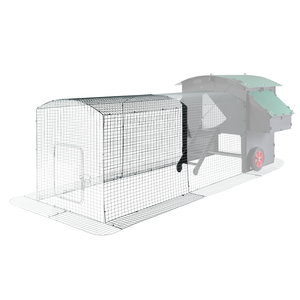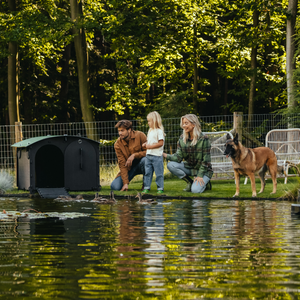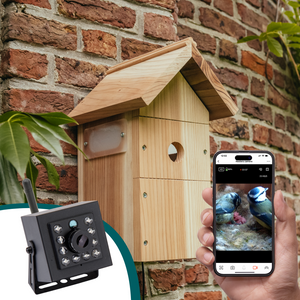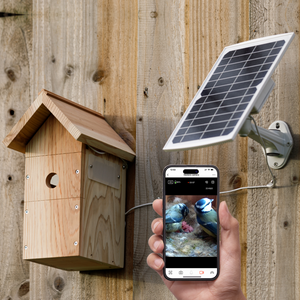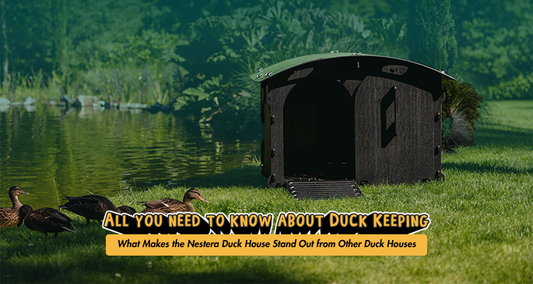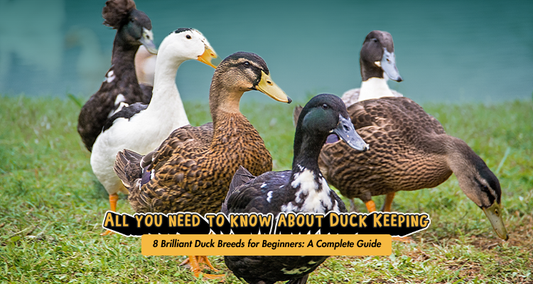Since the early days of domesticated poultry, chicken keepers have debated the best way to keep their flocks safe and secure. While some prefer allowing their birds to roam freely, others opt for enclosed spaces like chicken runs.
In this blog, we’ll explore the benefits and challenges of different containment methods, from traditional runs to electric fencing and full free-ranging.
Why Do Chickens Need a Run or Enclosure?
Most chicken keepers don’t own vast expanses of land, making fencing a necessity. Additionally, very few areas are free from predators, which means that providing a secure space for your flock is essential for their safety. Enclosures protect chickens from other animals and moving vehicles, helping to prevent potentially fatal accidents.
Interestingly, while humans prefer spacious houses with small gardens, chickens thrive in the opposite setup. They require compact, secure housing and a large outdoor area where they can forage, dust bathe, and explore.
Managing Chickens in a Run
Aviaries or walk-in runs are a popular choice among chicken keepers. These enclosures offer the highest level of protection from predators and pests, although they can be more expensive and space-limited. Here are some tips for optimizing your run:
- Maximise Space: Build the largest run possible within your budget and garden size—you won’t regret it!
- Use a Chicken Tunnel (Chunnel): Connect the coop to the run with a chicken tunnel for extra roaming space.
- Add Enrichment: Wood chippings, logs, branches, and hanging feeders keep chickens engaged.
- Provide Shelter: A cover offers shade and rain protection while keeping the run hygienic.
- Maintain Hygiene: Replace wood chippings annually and use ground sanitizing powder to reduce pathogens.
- Introduce Novelty: Keep chickens entertained with ball feeders, live insects, piles of leaves, or fruit on a string.
If you allow your flock to free range during the day, they will naturally return to the run and coop at dusk.
Are Chickens Happy in a Run?
While chickens can’t tell us how they feel, we can observe their behaviour to gauge their well-being. Animal welfare experts suggest that expectations play a role in how animals perceive their conditions. Chickens raised in free-range environments may struggle with confinement, while those accustomed to a run tend to adapt more easily.
To keep chickens happy in a run:
- Provide plenty of enrichment.
- Use varied perches and activities.
- Offer a balanced diet and fresh water.
- Ensure adequate space and shelter.

Chicken Runs, Electric Fencing, or Free-Range: Which is Best?
Each method has pros and cons, depending on your space, budget, and security concerns:
Free-Ranging
- Pros: Natural environment, more space, lower cost.
- Cons: High risk of predation, potential damage to gardens, exposure to vehicles and other hazards.
Electric Poultry Fencing
- Pros: Effective against ground predators, easy to move, prevents grass damage.
- Cons: Not suitable for small children, ineffective against aerial predators, requires a power source.

Chicken Runs
- Pros: Maximum predator protection, weather shelter, ideal for small gardens, secure for unattended flocks.
- Cons: Higher cost, less space for foraging, requires enrichment to prevent boredom.
How to Upgrade Your Chicken Run
Enhancing your chicken run improves both security and your flock’s quality of life. Consider these upgrades:
- Expand the Space: Connect two runs with a chicken tunnel.
- Use Stronger Materials: Galvanised weld mesh is more predator-resistant than standard chicken wire.
- Install a Predator Skirt: Bury wire at least 6 inches deep to prevent digging.
Our chicken runs are manufactured with ‘anti-chew' solid steel weld mesh with a durable PPA coating and include a wide mesh skirt around the entire perimeter, making tunnelling nearly impossible.
- Add a Roof: Protects from weather, aerial predators, and escape attempts.
- Improve Flooring: Use straw or wood chippings for scratching and foraging.
- Introduce Food Challenges: Scatter seeds or live insects in bedding to encourage natural behaviours.
- Incorporate Perches: Provide various heights and textures for roosting.
- Hang Feeders and Drinkers: Keeps food clean and encourages natural movement.
- Add a Dust Bath: Essential for chicken hygiene and feather health.
- Experiment with Swings and Toys: Mirrors, treat dispensers, and xylophones provide mental stimulation.
- Install a Remote Camera: Monitor your flock anytime from anywhere.
Our cameras are just the perfect addition to your set up! Keep an eye on your flock 24/7 with the Nestera Chicken Coop Camera—featuring night vision, motion detection, and a solar-powered design for hassle-free monitoring. Stay connected and ensure your chickens' safety from anywhere with live HD streaming straight to your phone!
Final Thoughts
There’s no one-size-fits-all solution when it comes to chicken containment. While free-ranging offers natural benefits, it comes with risks. Electric fencing provides flexibility, but it may not deter all predators. Chicken runs offer the most protection, making them ideal for many keepers.
By carefully considering your space, budget, and predator risks, you can create a safe, enriching environment that keeps your flock healthy and happy.
Ready to set up the perfect space for your chickens? Explore our range of chicken runs and accessories today!
